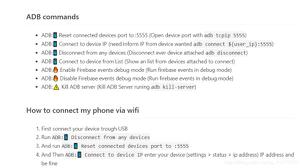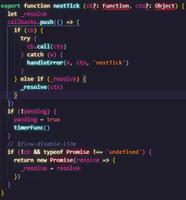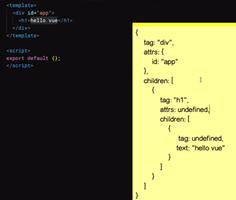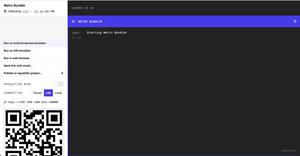React Fiber源码分析 第三篇(异步状态)

先附上流程图~
调用setState时, 会调用classComponentUpdater的enqueueSetState方法, 同时将新的state作为payload参数传进
enqueueSetState会先调用requestCurrentTime获取一个currentTime,
function requestCurrentTime() { // 维护两个时间 一个renderingTime 一个currentSechedulerTime
// rederingTime 可以随时更新 currentSechedulerTime只有在没有新任务的时候才更新
if (isRendering) {
return currentSchedulerTime;
}
findHighestPriorityRoot();
if (nextFlushedExpirationTime === NoWork || nextFlushedExpirationTime === Never) {
recomputeCurrentRendererTime();
currentSchedulerTime = currentRendererTime;
return currentSchedulerTime;
}
return currentSheculerTime
通过获取到的currentTime, 调用computeExpirationForFiber,计算该fiber的优先级,
if (fiber.mode & AsyncMode) { if (isBatchingInteractiveUpdates) {
// This is an interactive update
expirationTime = computeInteractiveExpiration(currentTime);
} else {
// This is an async update
expirationTime = computeAsyncExpiration(currentTime);
}
...
}
这个函数其他点比较简单, 里面主要有下面 这个判断要说明一下, 如果是属于异步更新的话,会根据是 交互引起的更新 还是其他更新 来调用不同的函数computeInteractiveExpiration和computeAsyncExpiration,
可以看到这两个函数最后返回的都是computeExpirationBucket函数的结果, 只是入参不同, computeInteractiveExpiration的参数是500, 100, computeAsyncExpiration的参数是5000, 250, 然后看computeExpirationBucket函数可以看到, 第二个参数(500和5000)越大,则返回的expirationTime越大, 也就是说 computeInteractiveExpiration的更新优先级高于computeAsyncExpiration, 则交互的优先级高于其他
获得优先级后则和同步更新一样, 创建update并放进队列, 然后调用sheuduleWork
var classComponentUpdater = { isMounted: isMounted,
enqueueSetState: function (inst, payload, callback) {
var fiber = get(inst);
// 获得优先级
var currentTime = requestCurrentTime();
var expirationTime = computeExpirationForFiber(currentTime, fiber);
// 创建更新
var update = createUpdate(expirationTime);
update.payload = payload;
if (callback !== undefined && callback !== null) {
update.callback = callback;
}
enqueueUpdate(fiber, update);
scheduleWork(fiber, expirationTime);
},
接下来的步骤和同步一样, 直到同步调用的是performSyncWork函数, 而异步调用的是scheduleCallbackWithExpirationTime函数
scheduleCallbackWithExpirationTime函数首先判断是否存在callback正在进行中, 判断现有expirationTime和其优先级,若优先级比较低则直接返回, 否则设置现在的fiber任务为新的callback,并把原来的回调从列表中移除
function scheduleCallbackWithExpirationTime(root, expirationTime) { if (callbackExpirationTime !== NoWork) {
// 判断优先级
if (expirationTime > callbackExpirationTime) {
// Existing callback has sufficient timeout. Exit.
return;
} else {
if (callbackID !== null) {
// 取消, 从回调列表中删除
schedule.unstable_cancelScheduledWork(callbackID);
}
}
// The request callback timer is already running. Don't start a new one.
}
// 设置新的callback和callbackExiporationTime
callbackExpirationTime = expirationTime;
var currentMs = schedule.unstable_now() - originalStartTimeMs;
var expirationTimeMs = expirationTimeToMs(expirationTime);
// 计算是否超时
var timeout = expirationTimeMs - currentMs;
callbackID = schedule.unstable_scheduleWork(performAsyncWork, { timeout: timeout });
}
接下来调用schedule.unstable_scheduleWork(performAsyncWork, { timeout: timeout })函数, 并生成一个节点, 存储回调函数和超时时间,插入到回调列表, 并根据超时排序, 调用ensureHostCallBackIsScheduled函数,最后返回该节点
function unstable_scheduleWork(callback, options) { var currentTime = exports.unstable_now();
var timesOutAt;
// 获取超时时间
if (options !== undefined && options !== null && options.timeout !== null && options.timeout !== undefined) {
// Check for an explicit timeout
timesOutAt = currentTime + options.timeout;
} else {
// Compute an absolute timeout using the default constant.
timesOutAt = currentTime + DEFERRED_TIMEOUT;
}
// 生成一个节点, 存储回调函数和超时时间
var newNode = {
callback: callback,
timesOutAt: timesOutAt,
next: null,
previous: null
};
// 插入到回调列表, 并根据超时排序, 最后返回该节点
if (firstCallbackNode === null) {
// This is the first callback in the list.
firstCallbackNode = newNode.next = newNode.previous = newNode;
ensureHostCallbackIsScheduled(firstCallbackNode);
} else {
...var previous = next.previous;
previous.next = next.previous = newNode;
newNode.next = next;
newNode.previous = previous;
}
return newNode;
}
ensureHostCallBackIsScheduled函数如名, 相对比较简单
function ensureHostCallbackIsScheduled() { if (isPerformingWork) {
// Don't schedule work yet; wait until the next time we yield.
return;
}
// Schedule the host callback using the earliest timeout in the list.
var timesOutAt = firstCallbackNode.timesOutAt;
if (!isHostCallbackScheduled) {
isHostCallbackScheduled = true;
} else {
// Cancel the existing host callback.
cancelCallback();
}
requestCallback(flushWork, timesOutAt);
}
往下看requestCallback, 这里说的如果已经在执行任务的话, 就必须有一个错误被抛出(抛出的错误是啥??),同时不要等待下一帧, 尽快开始新事件
如果如果当前没有调度帧回调函数,我们需要进行一个调度帧回调函数, 并设置isAnimationFrameScheduled为true,
接着执行requestAnimationFrameWithTimeout;函数
requestCallback = function (callback, absoluteTimeout) { scheduledCallback = callback;
timeoutTime = absoluteTimeout;
if (isPerformingIdleWork) {
// 如果已经在执行任务的话, 就必须有一个错误被抛出(抛出的错误是啥??),同时不要等待下一帧, 尽快开始新事件
window.postMessage(messageKey, '*');
} else if (!isAnimationFrameScheduled) {
isAnimationFrameScheduled = true;
requestAnimationFrameWithTimeout(animationTick);
}
};
requestAnimationFrameWithTimeout函数就是执行一个异步操作, 执行完毕后, 假设此时又有N个回调任务进入, 同时原来的回调还没有进行, 则回到scheduleCallbackWithExpirationTime函数上,
分为两个分支: 1. 假设优先级低于目前的回调任务, 则直接返回(已经把root加到root队列中)
2. 优先级高于目前的回调任务, 将目前的回调任务从列表中移除, 并将callBackID设为传入的回调, 接下来的路线与上面一致, 假设该传入的回调超时最早, 则会进入到cancelCallback函数,重 置各变量, 并进入到requestCallback函数, 此时除了赋值操作, 没有其他动作
到了这时候, 已经把新的回调替换正在进行的回调到回调列表。
函数正常执行, 调用callback, 即animationTick函数
cancelCallback = function () { scheduledCallback = null;
isIdleScheduled = false;
timeoutTime = -1;
};
var ANIMATION_FRAME_TIMEOUT = 100;var rAFID;
var rAFTimeoutID;
var requestAnimationFrameWithTimeout = function (callback) {
// schedule rAF and also a setTimeout
rAFID = localRequestAnimationFrame(function (timestamp) {
// cancel the setTimeout
localClearTimeout(rAFTimeoutID);
callback(timestamp);
});
rAFTimeoutID = localSetTimeout(function () {
// cancel the requestAnimationFrame
localCancelAnimationFrame(rAFID);
callback(exports.unstable_now());
}, ANIMATION_FRAME_TIMEOUT);
};
animationTick一个是把isAnimationFrameScheduled状态设为false, 即不在调度帧回调的状态, 同时计算帧到期时间frameDeadline , 判断是否在帧回调的状态, 否的话调用window.postMessage ,并设置isIdleScheduled状态为true
假设此时, 有N个回调进入, 分为两个情况: 1.假设优先级低于目前的回调任务, 则直接返回(已经把root加到root队列中)
2.优先级高于目前的回调任务, 将目前的回调任务从列表中移除, 并将callBackID设为传入的回调, 接下来的路线与上面一致,一直到animationTick函数,因为 postMessage比setTImeout更快执行,所以此时isIdleScheduled为false,和之前一样正常执行。
var animationTick = function (rafTime) { isAnimationFrameScheduled = false;
...
...
// 每帧到期时间为33ms
frameDeadline = rafTime + activeFrameTime;
if (!isIdleScheduled) {
isIdleScheduled = true;
window.postMessage(messageKey, '*');
}
};
postMessage会执行idleTick , 首先把isIdleScheduled\didTimeout置为false,
先判断帧到期时间和超时时间是否小于当前时间, 如果是的话, 则置didTimeout为true,
如果帧到期, 但超时时间小于当前时间, 则置isAnimationFrameScheduled 为false, 并调用requestAnimationFrameWithTimeout, 即进入下一帧
如果帧未到期, 则调用callbak函数, 并把isPerformingIdleWork置为true
idleTick 会先执行callback, 完成后才将isPerformingIdleWork 置为false, 执行callback的时候会传入didTimeout作为参数, callback为flushWork
var idleTick = function (event) { ...
isIdleScheduled = false;
var currentTime = exports.unstable_now();
var didTimeout = false;
if (frameDeadline - currentTime <= 0) {
// 帧过期
if (timeoutTime !== -1 && timeoutTime <= currentTime) {
// 回调超时
didTimeout = true;
} else {
// No timeout.
if (!isAnimationFrameScheduled) {
// 到下一帧继续任务
isAnimationFrameScheduled = true;
requestAnimationFrameWithTimeout(animationTick);
}
// Exit without invoking the callback.
return;
}
}
timeoutTime = -1;
var callback = scheduledCallback;
scheduledCallback = null;
if (callback !== null) {
isPerformingIdleWork = true;
try {
callback(didTimeout);
} finally {
isPerformingIdleWork = false;
}
}
};
flushwork首先把isPerformingWork置为true, 然后把didTimeout赋值给deallinObject对象, 接下来进行判断
如果已经过了帧的结束期, 则判断链表中有哪个节点已超时, 并循环调用flushFirstCallback函数解决超时节点,
如果还没有过帧的结束期, 则调用flushFirstCallback函数处理链表中的第一个节点, 循环处理一直到该帧结束
最后, flushwork函数会将isPerformingWork置为false, 并判断是否还有任务 有则执行ensureHostCallbackIsScheduled函数
function flushWork(didTimeout) { isPerformingWork = true;
deadlineObject.didTimeout = didTimeout;
try {
if (didTimeout) {
while (firstCallbackNode !== null) {
var currentTime = exports.unstable_now();
if (firstCallbackNode.timesOutAt <= currentTime) {
do {
flushFirstCallback();
} while (firstCallbackNode !== null && firstCallbackNode.timesOutAt <= currentTime);
continue;
}
break;
}
} else {
// Keep flushing callbacks until we run out of time in the frame.
if (firstCallbackNode !== null) {
do {
flushFirstCallback();
} while (firstCallbackNode !== null && getFrameDeadline() - exports.unstable_now() > 0);
}
}
} finally {
isPerformingWork = false;
if (firstCallbackNode !== null) {
// There's still work remaining. Request another callback.
ensureHostCallbackIsScheduled(firstCallbackNode);
} else {
isHostCallbackScheduled = false;
}
}
}
继续往下看, 则是flushFirstCallback函数,先把该节点从链表中清掉, 然后调用callback函数, 并带入deadlineObject作为参数
function flushFirstCallback(node) { var flushedNode = firstCallbackNode;
//从链表中清理掉该节点, 这样哪怕出错了, 也能保留原链表状态
var next = firstCallbackNode.next;
if (firstCallbackNode === next) {
// This is the last callback in the list.
firstCallbackNode = null;
next = null;
} else {
var previous = firstCallbackNode.previous;
firstCallbackNode = previous.next = next;
next.previous = previous;
}
flushedNode.next = flushedNode.previous = null;
// Now it's safe to call the callback.
var callback = flushedNode.callback;
callback(deadlineObject);
}
接下来的就是performAsyncWork函数,如果didTimeout为true, 则表明至少有一个更新已过期, 迭代所有root任务, 把已过期的root的nextExpirationTimeToWorkOn重置为当前时间currentTime.
然后调用performWork(Nowork, dl)函数
function performAsyncWork(dl) { if (dl.didTimeout) {
// 刷新所有root的nextEpirationTimeToWorkOn
if (firstScheduledRoot !== null) {
recomputeCurrentRendererTime();
var root = firstScheduledRoot;
do {
didExpireAtExpirationTime(root, currentRendererTime);
// The root schedule is circular, so this is never null.
root = root.nextScheduledRoot;
} while (root !== firstScheduledRoot);
}
}
performWork(NoWork, dl);
}
performWork函数在之前已经分析过了, 这里主要看存在deadline时的操作, 在帧未到期 或者 当前渲染时间大于等于nextFlushedExpirationTime时才执行 performWorkOnRoot, 并将currentRendererTime >= nextFlushedExpirationTime作为第三个参数传入, 一直循环处理任务,
最后清除callbackExpirationTime, callBackId, 同时, 如果还有任务的话, 则继续调用scheduleCallbackWithExpirationTime(nextFlushedRoot, nextFlushedExpirationTime);函数进入到回调
function performWork(minExpirationTime, dl) { deadline = dl;
// Keep working on roots until there's no more work, or until we reach
// the deadline.
findHighestPriorityRoot();
if (deadline !== null) {
recomputeCurrentRendererTime();
currentSchedulerTime = currentRendererTime;while (nextFlushedRoot !== null && nextFlushedExpirationTime !== NoWork && (minExpirationTime === NoWork || minExpirationTime >= nextFlushedExpirationTime) && (!deadlineDidExpire || currentRendererTime >= nextFlushedExpirationTime)) {
performWorkOnRoot(nextFlushedRoot, nextFlushedExpirationTime, currentRendererTime >= nextFlushedExpirationTime);
findHighestPriorityRoot();
recomputeCurrentRendererTime();
currentSchedulerTime = currentRendererTime;
}
}
if (deadline !== null) {
callbackExpirationTime = NoWork;
callbackID = null;
}
// If there's work left over, schedule a new callback.
if (nextFlushedExpirationTime !== NoWork) {
scheduleCallbackWithExpirationTime(nextFlushedRoot, nextFlushedExpirationTime);
}
// Clean-up.
deadline = null;
deadlineDidExpire = false;
finishRendering();
}
接下来看异步状态下的performWorkOnRoot函数。基本操作和同步一样, 在进入到renderRoot(root, _isYieldy, isExpired);函数时, 会根据是否已超时将isYieldy置为true或者false, 异步状态下未超时为false,
renderRoot和同步一样, 最后执行workLoop(isYieldy)
workLoop在未过期的情况下, 会执行shouldYield()函数来判断是否执行nextUnitOfWork, 和同步一样, 这里只需要关注shouldYied函数
function workLoop(isYieldy) { if (!isYieldy) {
// Flush work without yielding
while (nextUnitOfWork !== null) {
nextUnitOfWork = performUnitOfWork(nextUnitOfWork);
}
} else {
// Flush asynchronous work until the deadline runs out of time.
while (nextUnitOfWork !== null && !shouldYield()) {
nextUnitOfWork = performUnitOfWork(nextUnitOfWork);
}
}
}
shouldYield函数, 如果deadlineDidExpire为true, 即帧已到期, 直接返回true,
如果deadline不存在, 并且帧未到期, 则返回false, 可以执行单元
否则将deadlineDidExpire置为true
function shouldYield() { if (deadlineDidExpire) {
return true;
}
if (deadline === null || deadline.timeRemaining() > timeHeuristicForUnitOfWork) {
// Disregard deadline.didTimeout. Only expired work should be flushed
// during a timeout. This path is only hit for non-expired work.
return false;
}
deadlineDidExpire = true;
return true;
}
完结~撒花
以上是 React Fiber源码分析 第三篇(异步状态) 的全部内容, 来源链接: utcz.com/z/382664.html









